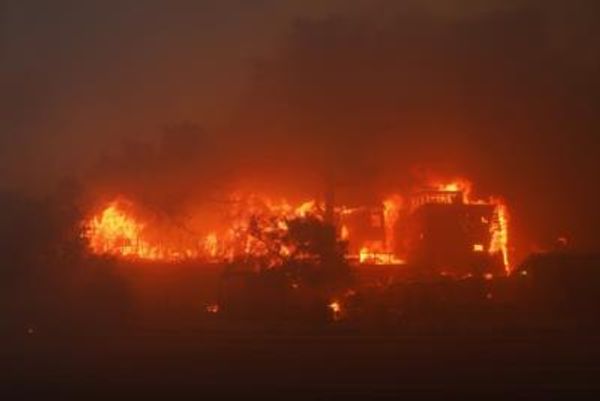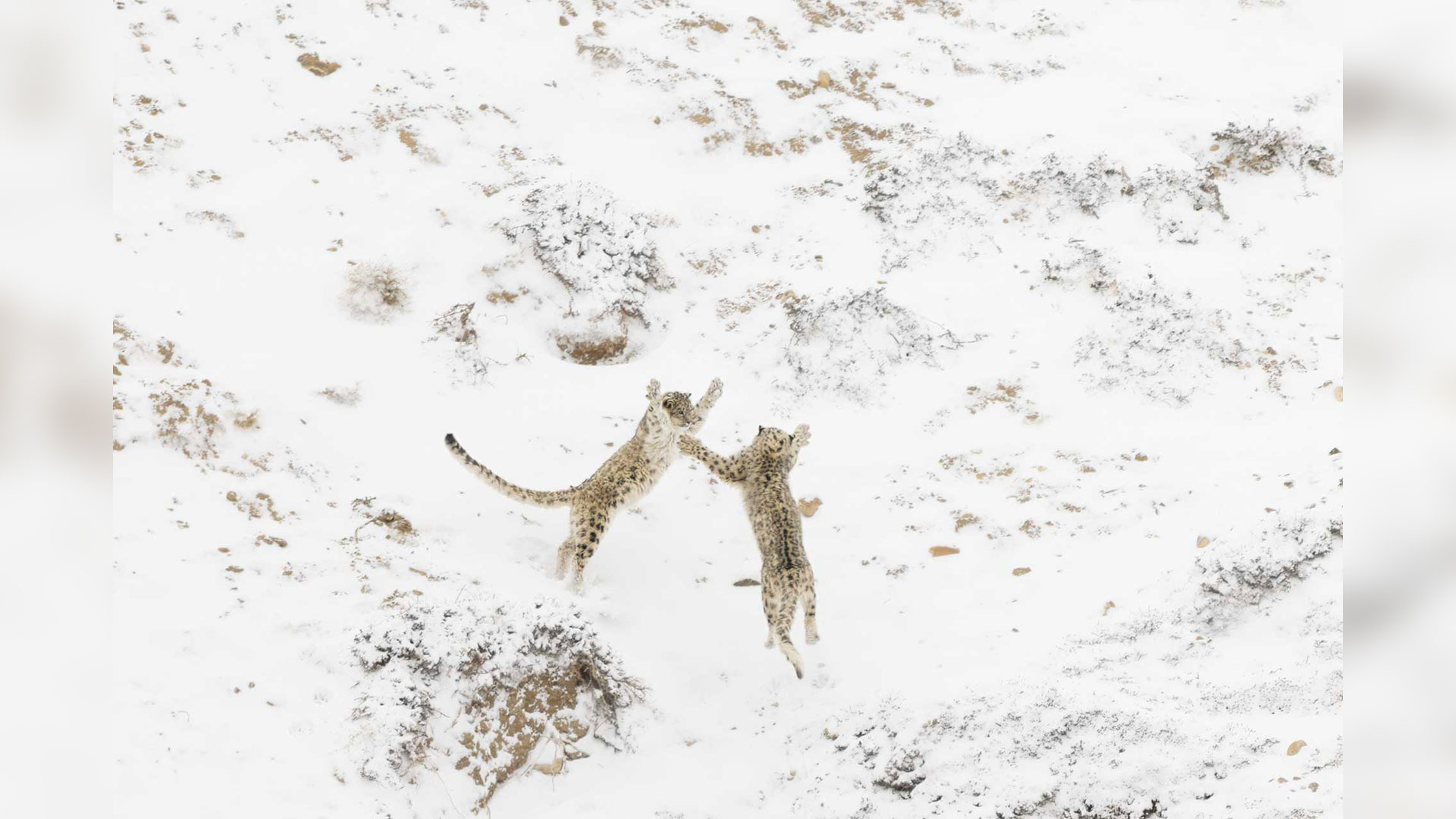
Considered by many as the “holy grail” of wildlife photography, Paolo Della Rocca from Italy has won the prestigious title of Nature Photographer of the Year 2024 with his image of two snow leopards fighting.
Organized by the Nature Talks foundation, a non-profit conservation organization also hosts of the Nature Talks Photo Festival, the competition is open to everyone globally, from as young as 10 years old.
The overall winner of the competition receives $3,000, and each category winner gets $500.
Known as “ghosts of the mountains,” snow leopards are elusive, solitary animals and are listed as ‘vulnerable’ by the International Union for Conservation of Nature (IUCN). Scientists don’t know how many are left in the wild, but it’s estimated that between 4,080 and 6,590 might be distributed between China, Bhutan, Nepal, India, Pakistan, Russia, and Mongolia.
Della Rocco took the photograph in Spiti Valley in Northern India, and he said of his image: “Since childhood, this journey has been a dream of mine, and the snow leopard has always been my favorite wild animal.
“Not even in my wildest dreams did I imagine photographing such a moment. I’m so glad and grateful that the jury of NPOTY 2024 appreciated this photograph!”
He shot the image with a Canon EOS R5 with an RF 100-500mm f/4.5-7.1L IS USM mounted on a tripod, with an exposure of 1/800sec at f/10, ISO1600.
Chairman Tin Man Lee explains why the jury chose this photograph of snow leopards as the winning image: “In this extraordinary photograph, the photographer has captured what many consider the holy grail of wildlife photography—not just one, but two snow leopards in a dramatic confrontation.
“The image freezes a breathtaking moment as these elusive cats rear up on their hind legs, their powerful forms perfectly separated against the snowy landscape, creating a scene of raw power and natural drama.
“What elevates this image beyond a mere sighting is the technical excellence in capturing such explosive behavior in challenging mountain conditions, combined with the artistic merit of a composition that places these mysterious cats in their ethereal, high-altitude habitat.”
The 2025 competition opens today, so enter now, and let’s take a look at some of the best category entries from 2024.
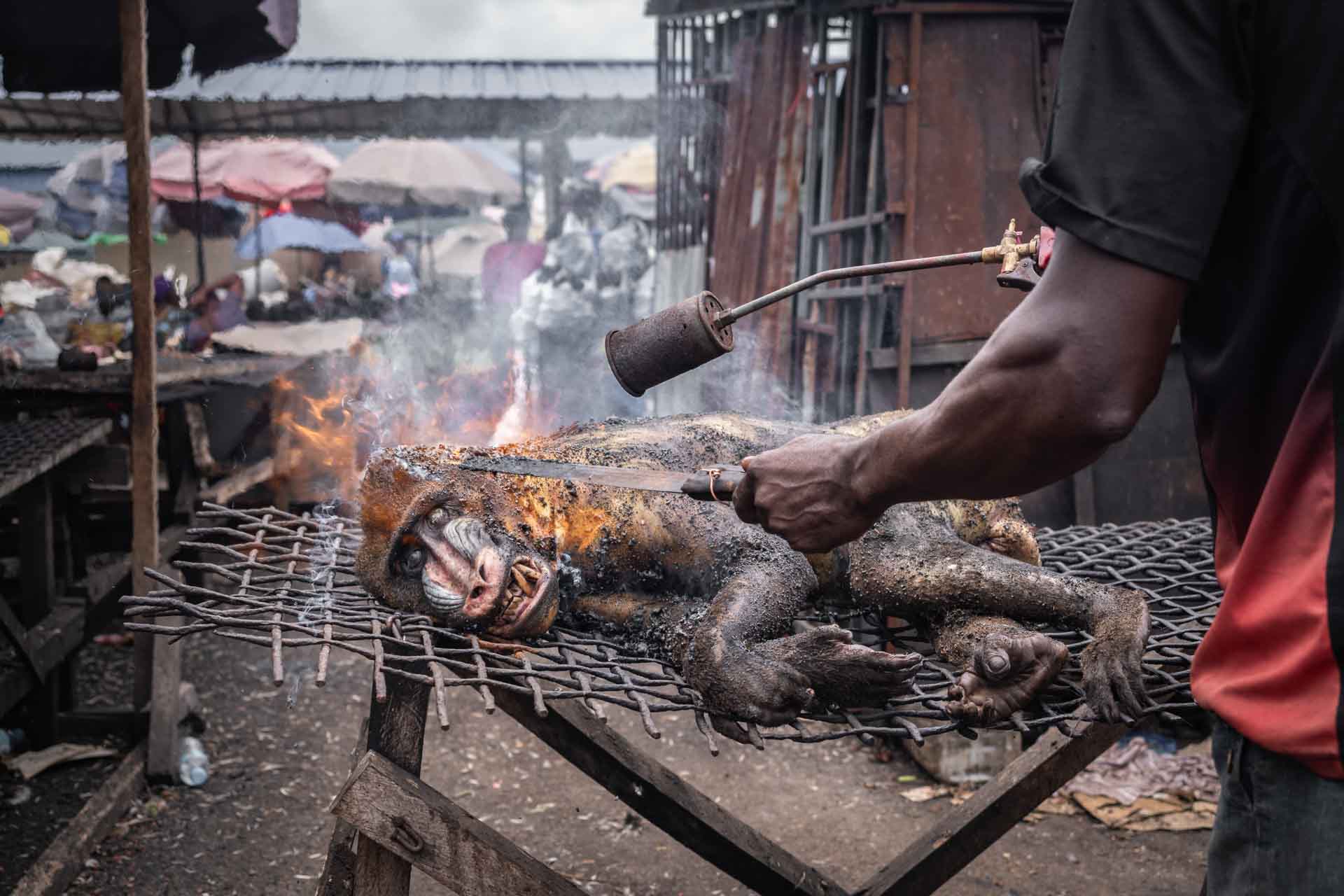
Gerard Carbonell says:
"The carcass of a male mandrill (Mandrillus sphinx) is being burned to remove the fur for the purpose of selling the meat in a market on Bioko Island, Equatorial Guinea. Mandrills do not naturally occur on the island and are illegally trafficked from the mainland. The hunting, sale, and consumption of primates were banned in Equatorial Guinea by Presidential Decree in 2007. Nevertheless, endangered species of primates continue to be hunted for bushmeat, traditional medicine, or for trafficking as pets.
"These practices, combined with the ongoing exploitation of their forests, threaten the future of primate species in the country. On the other hand, such practices are also an important aspect of local culture and tradition, serving as a major source of income for many families. This complex coexistence between humans and wildlife requires open-minded, multi-faceted perspectives that aim for sustainable wildlife management while also preserving the livelihoods and customs of local communities, ensuring their well-being."
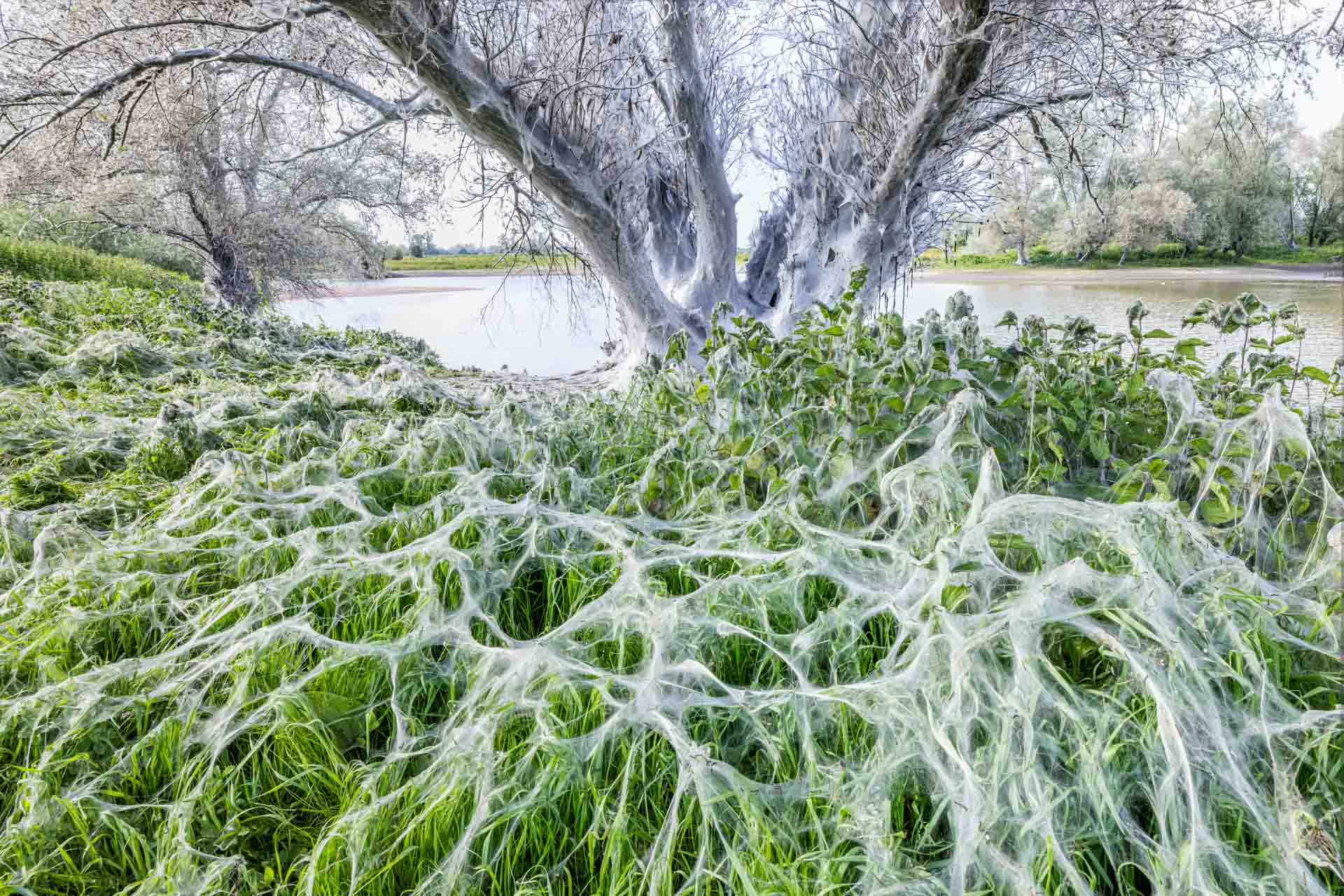
Theo Bosboom says:
"Welcome to the spooky but also incredibly beautiful world of the ermine moth (Yponomeutidae) and its caterpillars! In June 2023, a Google alert notified me of an explosion of willow ermine moth caterpillars in an area on the Waal near Boven-Leeuwen, not very far from my hometown Arnhem (the Netherlands). I went there the same evening and couldn’t believe what I saw: a gigantic old willow tree was completely wrapped in white silk, as well as some of the vegetation around it and a number of other willow trees nearby. In addition, it was crawling with caterpillars, millions of them.
"The ermine moth is a small moth, common in the Netherlands and surrounding countries. The caterpillars of the butterfly live together in large numbers. They protect themselves from enemies such as birds and parasitic wasps by wrapping the trunks and branches of trees with white silk so that they can feed on the leaves on the inside undisturbed. The webs can be seen on various tree species such as apple trees and cardinal’s hat, but on willows in particular, the webs can be very extensive. Not without reason the work of the caterpillars is often compared to that of the well-known artist couple Christo, who wrapped the Reichstag in Berlin, countless other buildings and also trees with silk.
"Pupation also takes place within the webs, after which the moths fly out and each go their own way. The tree is often eaten completely bare, but ultimately suffers no damage from the caterpillars. After 1 to 2 months the tree will have full leaves again. It is a wonderful example of successful teamwork in nature, a bit similar in that sense to for example the starling murmurations.
"I had seen and photographed the work of the ermine moth before, but never on such an extensive scale. It was a marvelous sight of ghostly beauty."
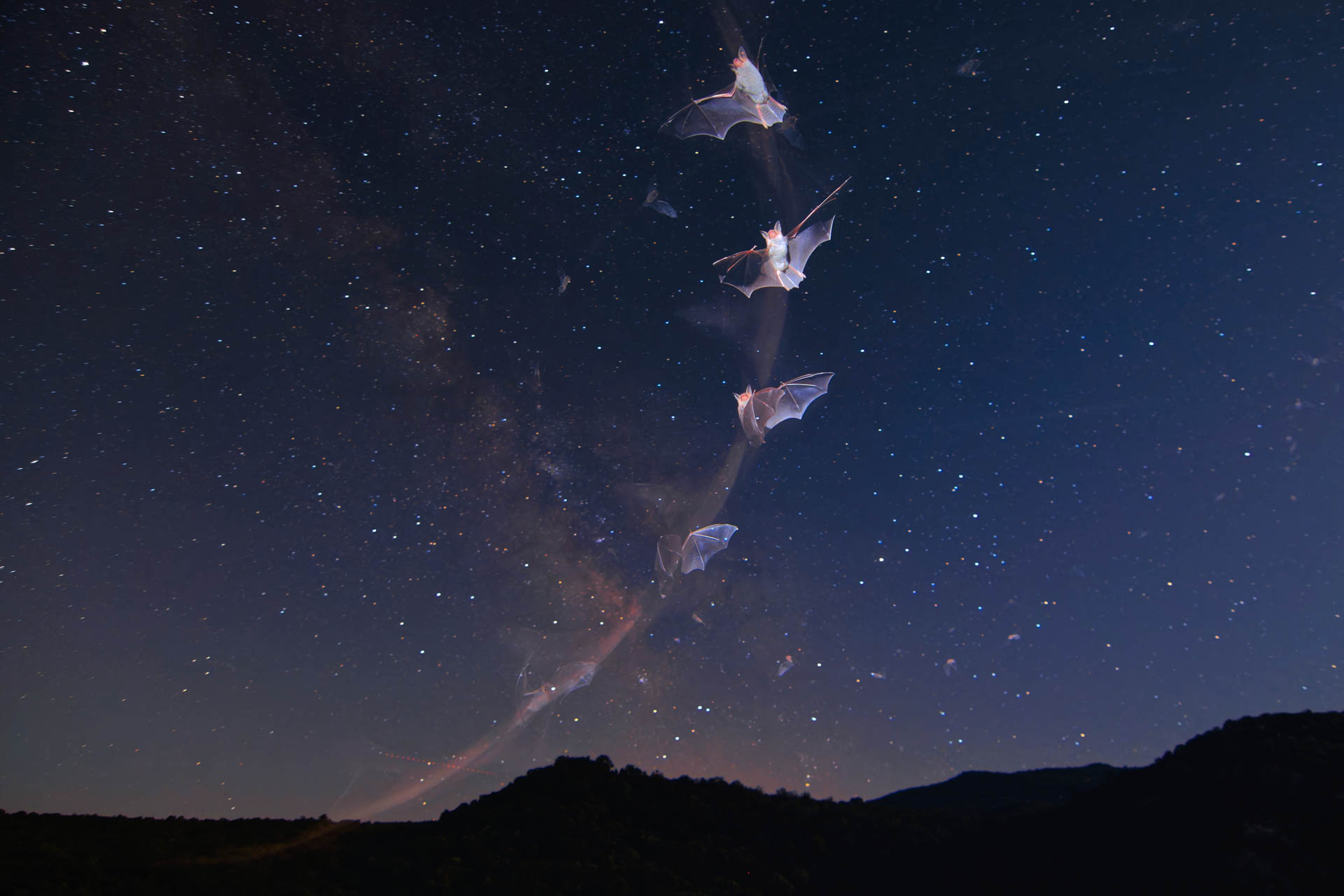
Ismael Domínguez says:
"One night, it struck me to experiment with a long exposure while using a flash. To my surprise, a small bat appeared in the frame, flying through the scene. Inspired by this, we set the flash to strobe mode, allowing us to capture the bat multiple times in a single image, all while the Milky Way provided a stunning backdrop. The result was achieved using a carefully executed long exposure."
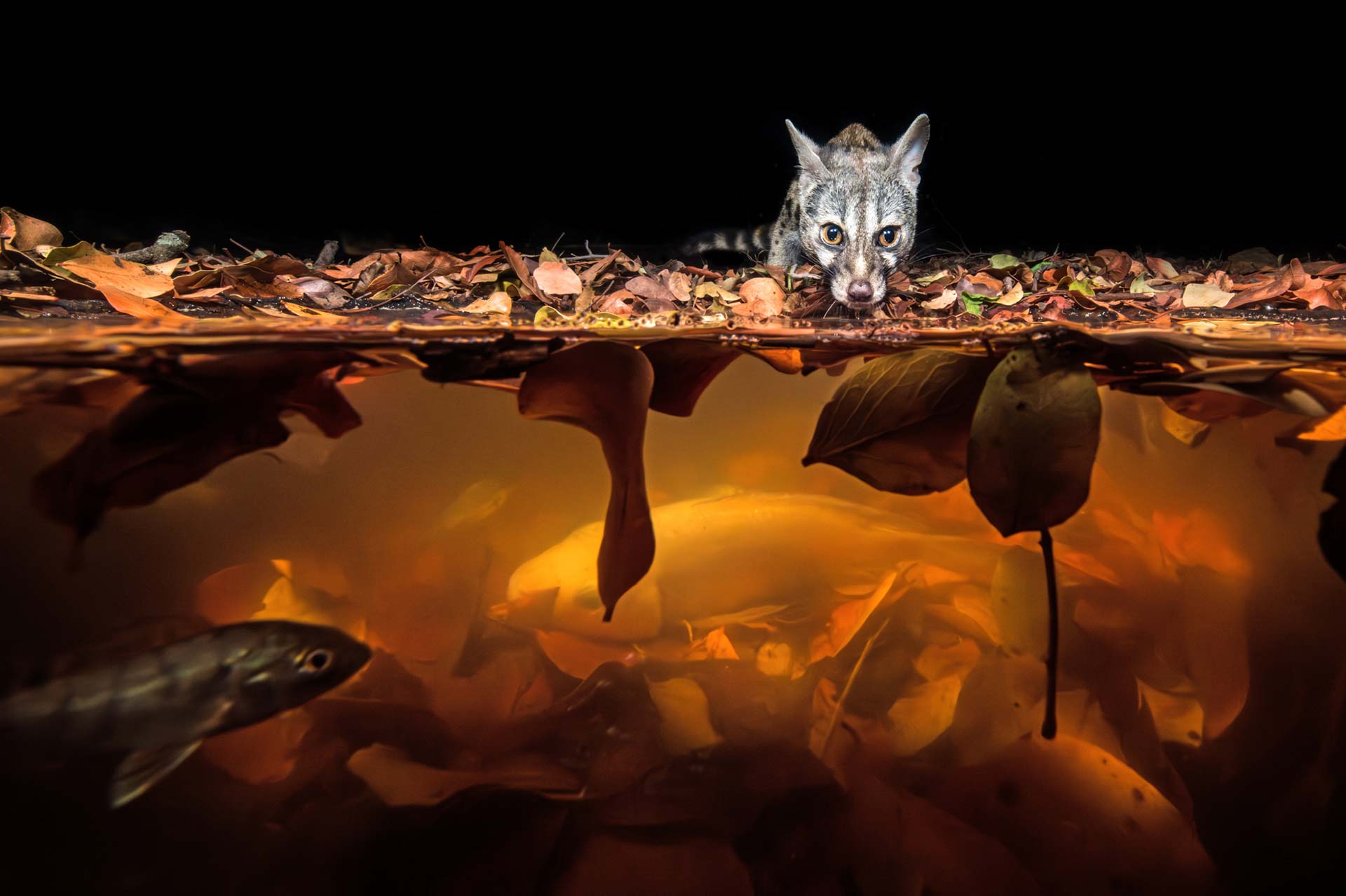
Hannes Lochner says:
"A small-spotted genet visits a water pond for a sip and glimpses a cluster of small carp swimming below the water’s surface. These elusive creatures are adept hunters of various prey: fish, frogs, mammals, birds, eggs, reptiles, and amphibians, and they have a penchant for fruits, insects, and forest-floor mushrooms. My aim was to unite these realms, above and below, by installing a camera, multiple light sources, and a gentle glow beneath the water. The aspiration was to capture the essence of autumn leaves, perhaps even encountering a fish or two if fortune smiled. As two worlds converged, an image I had dedicated over a year to crystallized before me – a testament to the fusion of these contrasting yet harmonious environments, triggered with a motion sensor.
"I tried this image for years on bigger game, but most of the gear was either killed or dragged away never to be seen again. I got lucky with the small genet. Just interested in the moving of the fish, and drinking water."
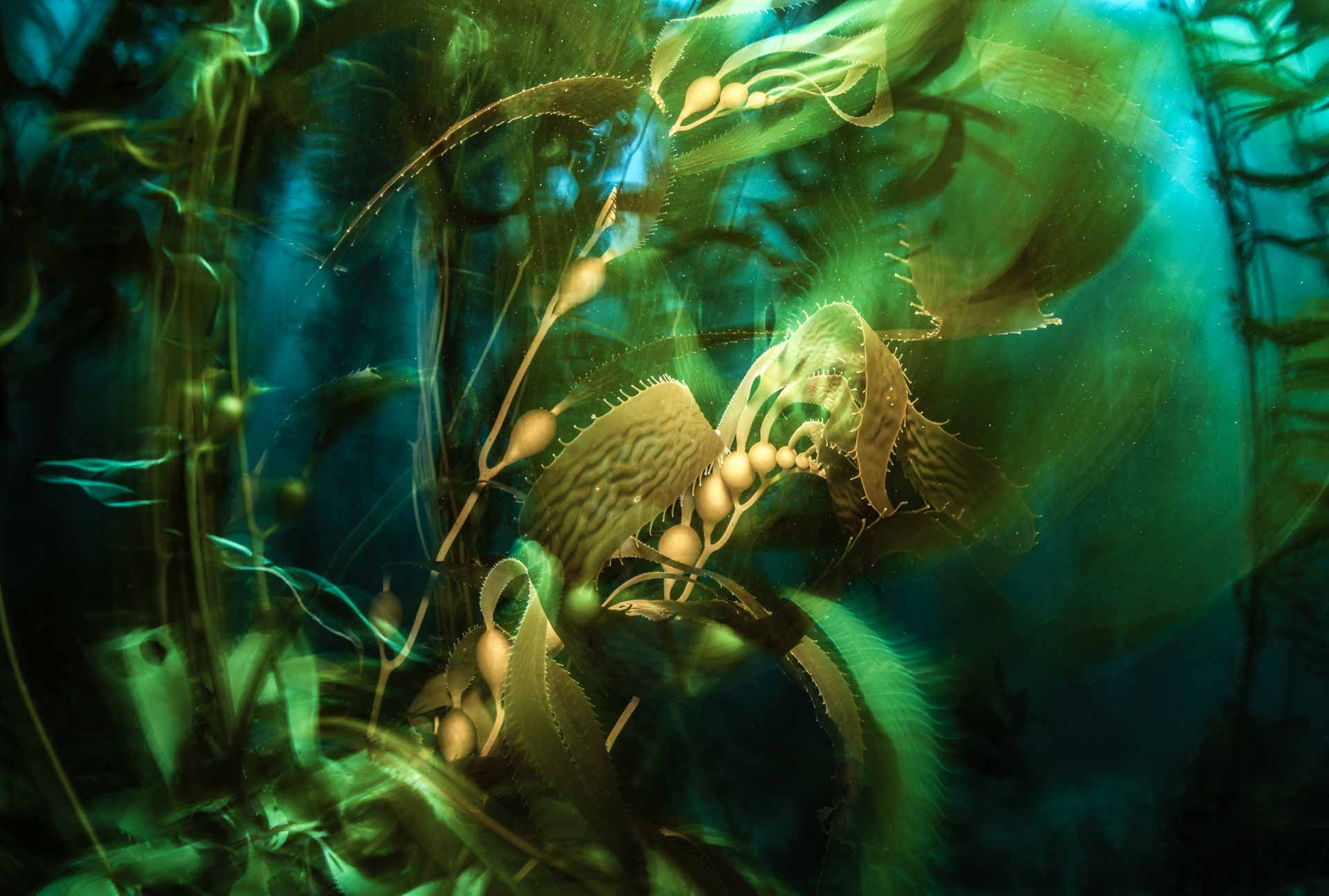
Junqi Peng says:
"Giant Kelp (Macrocystis pyrifera), one of the foundation species in temperate water ecosystems, can grow to an average height of 30 meters (100 feet) and up to 53 meters (175 feet) in ideal conditions. When grouped, it creates towering underwater forests, vibrant marine habitats, and one of the world’s most productive and dynamic ecosystems. Giant kelp forests are found in various water zones, including the Eastern Pacific Coast (from Alaska and Canada to the waters off Baja California), as well as the temperate coasts of South America, New Zealand, and Australia.
"Since 2014, the North Coast has experienced an unprecedented collapse of giant kelp forests due to marine heatwaves. While recovery efforts are underway, these forests have not yet returned to their pre-2014 levels. As a diver in California, I am always captivated by the beauty of the kelp formations and their movement in the water, intensified by surging currents. My goal has been to illustrate the artistic side of this underwater environment and to advocate for the protection and restoration of giant kelp forests in California and worldwide. After various experiments, I found that long-exposure photography perfectly captures the strength and dynamic essence of giant kelp.
"However, realizing this idea took nearly a year. To achieve the long-exposure effect with an ideal background, the density of the kelp, the intensity of the surge, and the ambient light all needed to be optimal. This effect was ultimately achieved on a late summer afternoon (around 5:30 PM) at a depth of 10 meters (33 feet) in the Channel Islands. I positioned two strobes above my camera, angled downward, to illuminate backscatter particles like stardust. I was thrilled with the final outcome."

Pandora Maund says:
"I had originally hoped to return to South Africa in 2023 for another safari, but that didn’t pan out. However, a friend invited me to join her family in the Seychelles for a couple of weeks. Having never been before, I wasn’t quite sure what to expect in terms of wildlife photography. I reached out to the ICS (Island Conservation Society) team on the island and mentioned that I would be on Desroches Island for a couple of weeks. I offered to provide any photography services and get involved with any conservation projects while I was there. After working with the Giant Aldabra Tortoises, I was invited to join an early morning beach patrol to monitor bird species and track where turtles had come from the sea overnight to lay their eggs on the beach.
"I had hoped to witness and photograph turtle hatchlings making their way to the sea as the sun rose. The hatchlings instinctively wait until the sand cools, indicating night time, when there’s less risk of predation. As the sun rises, they use its light to guide them to the sea and as far away from shore as possible, where predation is highest. Unfortunately, only around 1 in 1000 hatchlings survive to adulthood. Once they leave the nest, predators such as birds, ghost crabs, and fish pose a significant threat.
"Ghost crabs are abundant on the beach, scavenging anything from fallen fruit and plants to decaying animals—and unfortunately, live turtle hatchlings. As I walked along the beach, I spotted several horned ghost crabs. One of them had something in its claws, and I realized it had caught one of the stragglers on its first journey to the sea. I immediately lay flat on the sand and switched my lens to a 300mm (600mm equivalent) prime. The crab was scuttling along the beach, dropping its prize and picking it up again. I waited patiently until it turned to face me, capturing the shot. Though it’s difficult to identify the species of the turtle, it was likely a critically endangered Hawksbill, which can be found around this remote island."
Fancy entering for 2025? Why not take a look at our guides to the best cameras for beginners, the best professional cameras, and the best cameras for wildlife photography.


